Ready Player One was an ambitious film. The kind that, in the hands of a lesser director, would have absolutely faltered in on itself. It explores a world so vast and so easy to get lost in, and yet Spielberg handles it with masterful prevision. At the SXSW premiere of the film, Spielberg summarized his approach to the film as follows;
“The pop-culture references can be seen out of the side windows, but if you look right out of the front windshield, you can follow the story”.
So what does any of that have to do with a half-animated film noir from 1988, concerning a bunny whose wife decided to play paddy cake with another man behind his back? Well, a lot, actually.
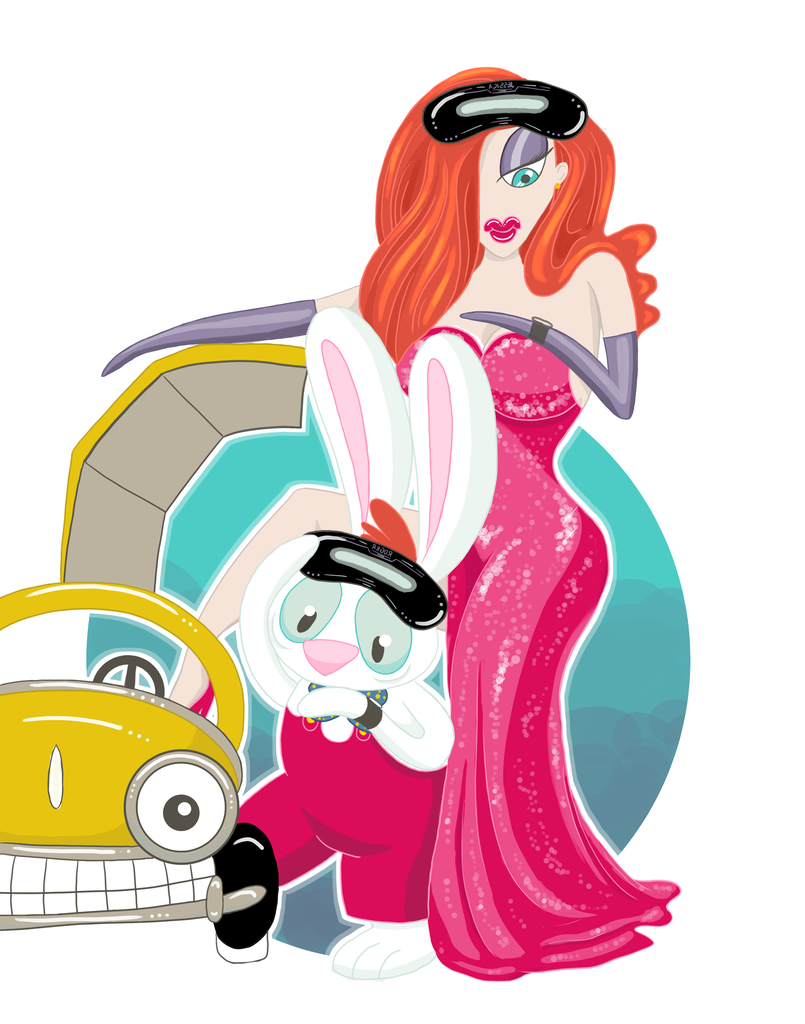
Illustration by deadbinky.
On June 22, 1988, Robert Zemeckis’ Who Framed Roger Rabbit was released in cinemas across the country. It was the final product of nearly seven years worth of planning, negotiating, writing, filming, animating, and editing. Produced as a joint venture between Amblin and Touchstone, the film marked the first time in history that Disney’s animated characters got to mix and mingle with Warner Bros’ own animated line-up. And while this was historic in a great many ways, Zemeckis never lost sight of what truly mattered.
The film opens with an animated short, starring Roger Rabbit as an unprepared babysitter. In the span of its five-minute runtime, the short channels the eccentric energy of the Tex Avery sketches of old and immediately transports the audience to a different time and place. When the camera then pulls back to reveal the shooting crew who is filming the animated short, it kicks the doors in on our preconceived notions of animation. It treats Roger and Baby Herman as real actors, and in this one single shot, the film recontextualizes our entire understanding of animation in the world of this film and supplies us decades-worth of world-building.
As overwhelming as all of this information could have been, as easy as it would have been to immediately lose the audience, the most ingenious thing Zemeckis does is also among the simplest. At the end of this single-take that holds our hand through the transition, he pans back to show that we have been experiencing the entire opening through the point of view of Eddie Valiant.
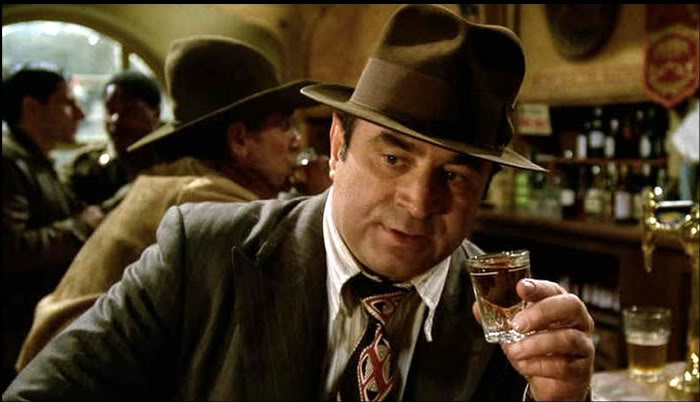
Throughout the film, Valiant is the audience surrogate who acts as an anchor for the film at large. After paying a visit to R.K. Maroon’s office, Valiant’s walk out of the studio is, again, captured in a single, long-take. He strolls past countless animated characters, all of whom are interacting with the real world. The ostrich opens the real-world door, the pelican rides a real-world bicycle, the hippo sits on and breaks a real-world bench. It’s mesmerizing to watch and it puts the audience squarely in the shoes of Eddie Valiant himself. Just as he is re-introduced into the world of toons for the first time in years, we as an audience are immersed in the reality and length of it. The shot runs for a little over a minute, without a single cut, and it makes the animations feel real. Rather than separating these elements into separate shots, Zemeckis shows it to us in one long, continuous take with every element able to interact with one another within the same frame. It’s a ton of more work, but the end result is indisputably remarkable.
This is the film’s methodical approach. Show the world to the audience through the eyes of Eddie Valiant and consistently go above and beyond the constraints of formal film language, to achieve a greater sense of realism. In fact, so much extra work was put into making the effects of Roger Rabbit as believable as possible that the film coined a term still used in the studios to this day: ‘bump the lamp’.
In a scene in which the handcuffed-together Valiant and Roger are hiding from Judge Doom in a secret room in the bar, the overhead lamp is bumped early-on and continuously sways back and forth throughout the proceeding shots. As it does, Roger’s shadow dances around the walls just as Valiant’s does. This was achieved through animation director Richard Williams and his team painstakingly going through frame-by-frame and adding the shadow animation in by hand. The end result isn’t even something that your average film-goer would consciously notice upon an initial viewing, but the team went the extra mile because they knew the wonders it could work on a subconscious level. Seeing both shadows move along the wall makes the viewer equate the two, it makes Roger just as real and tangible of a character as Valiant.
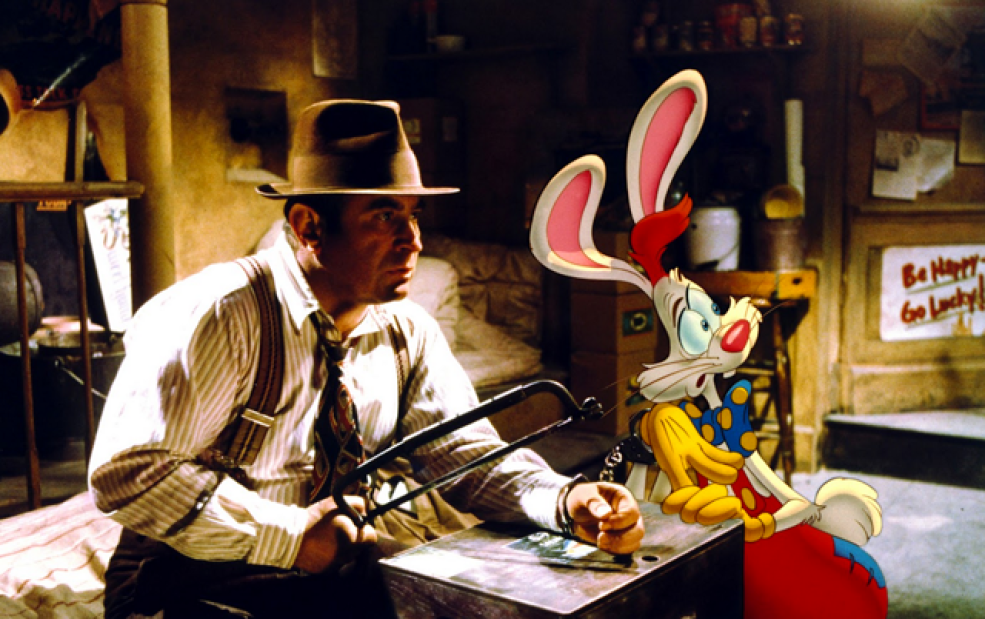
This want for pushing the cinematic form as far as humanly possible works wonders throughout the film, but it only works so well because of whose eyes we’re seeing it through. In an early sequence, Valiant goes to a nightclub to see Jessica Rabbit perform. When he arrives, Donald Duck and Daffy Duck are performing on dueling pianos. It’s a huge moment of IP cross-over, but Zemeckis keeps us anchored with Valiant. We see their performance as it grows increasingly insane and ludicrous, but only through the eyes of Valiant. Removing us from him could have easily resulted in this moment feeling superfluous or tacked on. Instead, it is a core component of the scene that not only sets the tone moving forward, it offers an early look into Valiant’s fear of toons and their more violent tendencies.
Even amongst all of the technical wizardry on display, the most impressive feat the movie accomplishes is in its quietest moment. Valiant and Roger hideout in a movie theater that is showing Goofy Gymnastics, a Disney short starring the Goof himself. Roger tells Valiant that the entire reason he got into show-business was because of how much Goofy made him laugh, and how that’s all he ever wanted to do. This revelation leads to Valiant telling Roger the story of how he came to stop working with toons after his brother was killed by one.
It’s an intimate moment between the two characters in which both of them reveal a crucial and driving piece of information about themselves that recontextualizes their actions up to this point. Roger is a natural born entertainer, who is only striving to bring the same happiness to others that his idol, Goofy, brought to him. He doesn’t mean any harm to Valiant or anyone else when he acts up, handcuffing the two of them together, singing for the bar patrons, or laughing loudly in the movie theater. He simply longs for joy and happiness, and to share it with others. More so than any effect, it humanizes Roger and allows us to see him as a fully-formed character, warts and all.
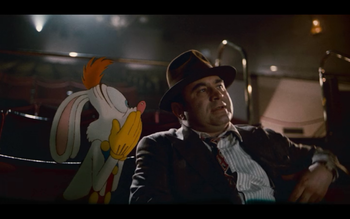
Valiant’s insight paints his actions towards toons in an entirely different light. He isn’t some Scrooge of a character, but rather someone who, just like Roger, loved the toons and the joy they brought to his life, but was betrayed by that very love and is now content to drown his sadness in alcohol and cynicism.
Later, when Valiant is forced to go into Toontown to save Roger, he gives up alcohol and is willing to face his demons so that he might preserve the joy and happiness of others. It’s a turning point for Valiant and for the larger commentary, the film is making about how we as an audience grow with (and against) the art of our youth.
In a particularly noteworthy visual, as Valiant enters Toontown, Zemeckis creates a frame within the frame. Literally giving audience’s Valiant’s point-of-view, we look through the front windshield, speeding towards Roger and driving the main narrative of the plot. But as Valiant looks out the side windows, we get glimpses of all the animated characters and references packed into the film.
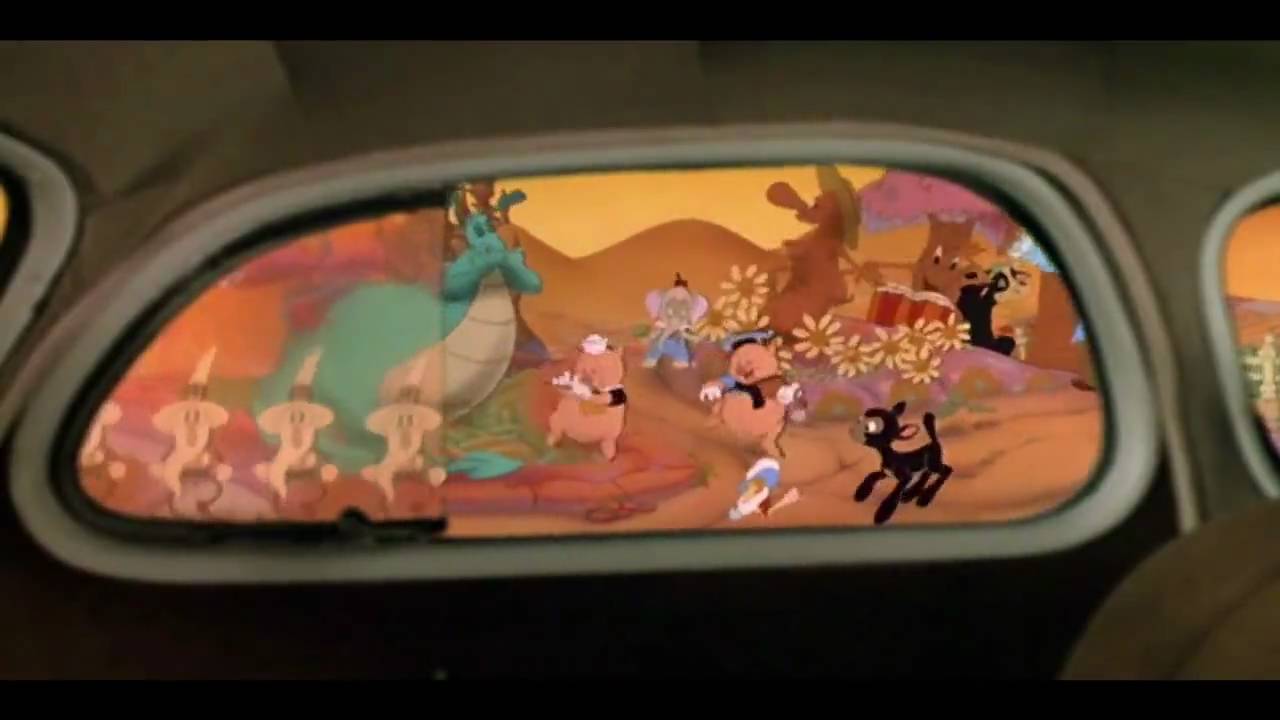
Ready Player One and Who Framed Roger Rabbit have a lot in common; both are based on novels they don’t have much in common with, both are populated with characters who shouldn’t be interacting together, and both feature a larger commentary about the generations of fans that see themselves in their characters. But perhaps the most pertinent aspect they have in common is a mantra so powerful that Zemeckis put it on-screen. You can put as much as you want to out the side windows, but none of it will ever matter if the road ahead is fraught with disaster.